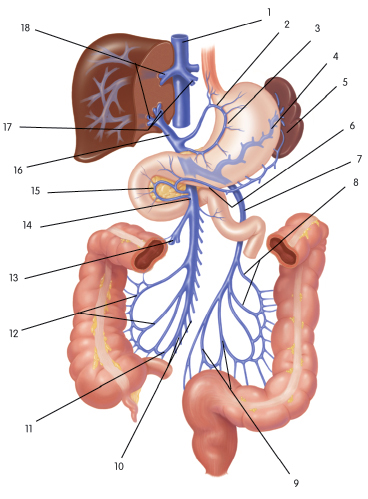
Study : Effects of TIPS with Portal Vein Thrombosis (PVT)
TIPS with Portal Vein Thrombosis (PVT)
Background and aims
To study whether TIPS used on patients with Portal vein thrombosis (PVT) negatively impacts the prognosis in those with cirrhosis.
The aim of our study was to evaluate the effects of transjugular intrahepatic portosystemic shunt (TIPS) placement in patients with cirrhosis complicated by PVT.
Methods
Seventy consecutive cirrhotic patients with non-tumoural PVT treated with TIPS for portal hypertension complications from January 2003 to February 2010 in a tertiary-care centre were followed until last clinical evaluation, liver transplantation, or death.
Results
TIPS was successfully placed without major procedure-related complications. After TIPS, the portal venous system was completely recanalised in 57% of patients, a marked decrease in thrombosis was observed in 30%, and no improvement was seen in 13%. 95% of patients with complete recanalisation after TIPS maintained a patent portal vein.
Predictors of complete recanalisation were a less severe and extensive PVT, de novo diagnosis of PVT, and absence of gastro-oesophageal varices. At follow-up, 1 patient had recurrence of bleeding, and 2 had spontaneous bacterial peritonitis. The rate of TIPS dysfunction at 12 and 24 months was 38% and 85% for bare stent and 21% and 29% for covered stent (p=0.001), respectively.
Occurrence of encephalopathy at 12 and 24 months was 27% and 32%, respectively.
Fifteen patients underwent liver transplantation.
Survival at 1, 12 and 24 months was 99%, 89% and 81%, respectively
Conclusion
Long-term outcome of non-tumoural PVT in patients with cirrhosis treated with TIPS placement is excellent.
Prospective randomised studies should investigate whether TIPS placement is the best therapeutic option in patients with cirrhosis who develops non-tumoural PVT.